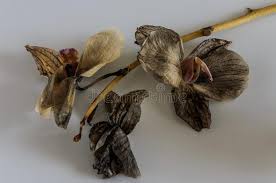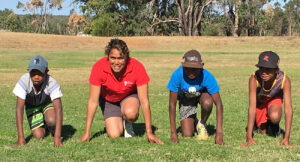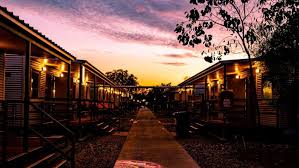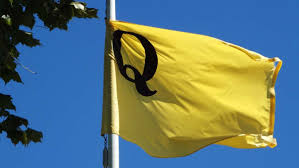The sight of our Prime Minister flailing around, without the wit and with deep-seated prejudices inherited in his childhood, reflects the fact that he is increasingly paralysed by the culture over which he presides. The problem with cultural change is that it takes time, and frequently depends on brutal decisions, not the least of which is to confront the problem head-on and cut away the diseased part.
Taking a medical analogy, once the doctor finds the abscess, it is drained. If the abscesses are miliary, then a general remedy is needed, and even then the disease may overwhelm the system.
All I know is the diseased process of our parliamentary government is not going to be solved by a laying on of hands or an outburst of political glossolalia.
The immediate response of sections of the Liberal Party is to introduce female quotas into the preselection process. Does the preselection procedures in the past give you reason to believe that this system will produce candidates that live within the Bell curve of normal women? And if you decide to select women who lie at least at the extremities of that curve are you sure that their idiosyncratic ways will benefit the community at large and not the tiny, skewed population that preselected them?
Extraordinary women may add colour and may play an important role, but the expectation for all women parliamentarians is that they will generally care and have an innate compassion and respect for other women. The current crop of female Liberal Party politicians (or for that matter National Party) in Canberra do not seem to have these qualities.

There is one female politician in the Liberal Party who has seemed an exception. She is a NSW State politician, Catherine Cusack. She and her husband Chris Crawford represent that remnant of the Liberal Party that used to participate in the then Australian Institute of Political Science, in its latter glory days when it ran a summer school in Canberra and its Board had members from both major political parties. Gough Whitlam unveiled his Medibank initiative at one of the Summer schools, such was their influence. They were able to discuss policy in terms of the financial and social implications. However, whenever Catherine Cusack has put forward genuinely liberal solutions, particularly in relation to conservation issues, she has been demoted, slapped down and unsupported by her colleagues, especially when attacked by the National Party.
Now she has called out the Prime Minister for his behaviour. Is this a single utterance of frustration and will she vanish back into the background of women who wear shapeless clothing, and have a bow in their hair to recognise their traditional inferiority at the time of the “rapture” – their role being in actually tending the hearth?
Cusack has issued herself with a challenge – that is to maintain her very important confrontational position. Otherwise, she will be dismissed as a remnant of a Liberal Party that, in the eyes of the current crop of her colleagues, never existed.
Meanwhile, Morrison recycles his bevy of outliers under the wing of Marise Payne, herself the invisible woman.
I was only 22
Rico Marley walked into a grocery store in midtown Atlanta on Wednesday afternoon carrying a guitar bag.
He headed for the men’s room, the authorities said, where he strapped on a bulletproof vest. He then donned a jacket, its pockets full of ammunition, and placed two loaded handguns in a left front pocket and two other loaded handguns in a right front pocket. In the guitar bag, he carried a 12-gauge shotgun, an AR-15 military-style rifle and a black ski mask.

Then he walked out into the store.
Police, tipped off by an alarmed shopper in the bathroom, soon stopped him. But the incident, just three miles from the site of one of the shootings last week that left eight people dead and coming two days after a man stormed a grocery store in Boulder, Colo, and killed 10, sent new waves of unease throughout greater Atlanta and also raised nationwide fears of copycat crimes.
It is stated that when the mass shooting season starts, then there is generally a series of massacres, and increasingly it seems that the supermarkets are the killing venues, whereas in the past it was schools.
This report in the NYT is unusual, instead of reporting a massacre, it provided details of the disturbed man before he could kill the innocents – his activities being seen by an observant guy who legitimately wanted to use the toilet; no, not a security guard, not a police officer, not anybody employed to guard the community. One can surmise that the alert was raised early in that the armed gunman was apprehended before he was able to effect mayhem.
In isolation, the 22 year old coloured, poorly educated gunman had a criminal record with relatively minor petty theft – a young man with a troubled mind. It is only newsworthy in that the potential killer was apprehended before the shooting, given that in Georgia, one does not have to conceal one’s weapons. In other words, a casual passerby in a country inured to gun violence may have shrugged seeing a fellow men’s room user donning a flak jacket as just a “normal” incident. In fact, when the observer informed the store attendant of what he had seen, the attendant was initially indeed very casual, but fortunately the vital call for police was made.
Last year in the USA there were about 20,000 gun-related murders and an almost equal number of individuals who committed suicide using a firearm. This was an increase overall, and the rise was attributed to being one endpoint of domestic violence.
On the other hand, mass shootings were absent, even though they constitute only about one per cent in most years. The reason for this is attributed to the COVID-19 pandemic. Schools were closed, there were fewer public gatherings. The whole nation was plunged into collective misery so that those potentially homicidal aggrieved were absorbed into the wider community or, as stated above, violence was absorbed within domestic situations.
When the gun control advocates try to define solutions, they rely on the few small-scale attempts to ameliorate the situation, but unless Americans believe that their gun culture is unacceptable and women at all levels of society are considered equal in mutual respect, everything is for nought.
 In other words, we are all powerless unless those who make the laws, makes the law. For me, if I were in power in Australia, I would limit the arms being made available to police forces. They are not a militia – not a paramilitary force. When did the police change from a “service” to a “force”? They do not need armoured vehicles and tear gas to protect the community. All police forces should be restricted in the colour they use, so they do not resemble a posh group of “bikies”. Try pink as the colour for their uniforms – why do they have to dress in black or midnight blue? Get rid of the “aviators”. Be more selective in the range of ironmongery with which they adorn their uniforms. It would be such a change to see police showing compassion, on a regular basis, rather than presented as a novelty.
In other words, we are all powerless unless those who make the laws, makes the law. For me, if I were in power in Australia, I would limit the arms being made available to police forces. They are not a militia – not a paramilitary force. When did the police change from a “service” to a “force”? They do not need armoured vehicles and tear gas to protect the community. All police forces should be restricted in the colour they use, so they do not resemble a posh group of “bikies”. Try pink as the colour for their uniforms – why do they have to dress in black or midnight blue? Get rid of the “aviators”. Be more selective in the range of ironmongery with which they adorn their uniforms. It would be such a change to see police showing compassion, on a regular basis, rather than presented as a novelty.
Another consideration would be to extend the principles of averment to all cases involving crimes of a sexual nature. I would turn the whole matter of proof over to the alleged assailant to prove he or she did not do it. Presumption of innocence in these cases does not work, first because of the trauma of the episode being cast out of the memory bank and then the unappetising prospect of ongoing harassment, being carried out in a court of law by an essentially misogynistic legal profession. Well, Gentlemen you only have to disprove that which has been so averred.
A consumer’s view of vaccination – albeit with the disadvantage of a medical degree
But infectious-disease experts are worried the pace needs to be faster to reach the high levels of immunity needed to slow the virus, especially as more transmissible variants spread throughout the country. To reach the level of protection needed, about 80 percent of the population has to be immunised, meaning that about 260 million people need to get vaccinated. That would require 3 million to 3.5 million shots being administered each day until April 30.
The Washington Post concludes an optimistic article about the efficacy of the Pfizer and Moderna vaccines in health workers with a muted warning. America has not embraced the Astra-Zeneca vaccine, which has been the subject of a number of caveats resulting in the temporary halt to its use in a number of countries. When these questions are answered and the world-wide juggernaut resumes, with the difficulties that entails to get momentum, another caveat is issued, currently surrounding some of the mutant strains of the virus and the ineffectiveness of that vaccine against these strains.

At the same time in Australia a great number of people who are not doctors are spruiking the virus vaccines, as if there were no doubt about their efficacy, their availability and the “Jab Program” being on time. As a result, there is the unedifying spectacle of political squabbling, and I as a customer has given up trying to make an appointment. The general practice phones are always busy; in fact, the general practitioners are not geared for mass vaccinations.
Again, I am told that the Pfizer vaccine needs to be stored at -70 degrees Centigrade, and given the shemozzle for a consumer, how can I be assured that the cold chain integrity has been assured? The questions then begin to flood out – for instance, how long will immunity last?
Clinical trials suggest that vaccine-induced protection should last a minimum of about three months. That does not mean protective immunity will expire after 90 days; it may last longer. However, that is still one unanswered question.
The other one, given the problems with the rollout, if I was able to secure a first dose, how long shall I have to wait for the second dose, and then more importantly, for the booster? It does not seem clear to me, whether (or more optimistically, when that will occur). That is why the J&J vaccine appeals to me more because it is single dose; but will it ever be registered in Australia? Questions, questions everywhere, but only opinions to imbibe. That is my reaction as an elderly consumer eligible for the injection. I am confused, and so will hold back. In the Australian climate it seems the best option is to wait and see.
I am very pro-vaccination, and unless it is caught up in this COVID mess I intend to get my inoculation against the flu as soon as possible My only worry is that the puerile political agendas will get in the way of the program, lending ammunition for the anti-vaxxers.
And a final question. Who was the bright spark who suggested “Jab”, with all the violent connotations of the word? It is more correctly “inoculation” or “vaccination” – injected into the muscle. “Jab” is variously to poke or thrust abruptly as jabbing a knife into a body; to stab or pierce as in jabbed the steak with a fork; or lastly to punch somebody with short straight blows.
I, the frightened old person, seeing a uniformed person with a syringe saying that “I am going to jab you – just a little jab – it won’t hurt you.” Violence follows me at the point of a needle.
I thus remain a watcher. There are just too many unknowns.
It may be raining here, but this just came from the Boston Globe
Workers at a Baltimore plant manufacturing two coronavirus vaccines accidentally conflated the vaccines’ ingredients several weeks ago, ruining about 15 million doses of Johnson & Johnson’s vaccine and forcing regulators to delay authorization of the plant’s production lines.
It does not affect Johnson & Johnson doses that are currently being delivered and used nationwide. All those doses were produced in the Netherlands, where operations have been fully approved by federal regulators.
But all further shipments of the Johnson & Johnson vaccine — projected to total tens of millions of doses in the next month — were supposed to come from the massive Baltimore plant.
Those shipments are now in question while the quality control issues are sorted out, according to people familiar with the matter.
Federal officials still expect to have enough doses to meet President Biden’s commitment to provide enough vaccine by the end of May to immunize every adult. The two other federally authorized manufacturers, Pfizer-BioNTech and Moderna, are continuing to deliver as expected.
Pfizer is shipping its doses ahead of schedule, and Moderna is on the verge of winning approval to deliver vials of vaccine packed with up to 15 doses instead of 10, further boosting the nation’s stock.
It is a pity Biden was not President a year earlier – when I was at my most skeptical – he seemed so ill equipped. But that is the nature of pontificatory error. It can be lost in the cushions of mea cathedra. I shall wait until his Presidency reaches 100 days before deciding the nature of my humble pie.
Food and Drink for the Memory
This past week has been a time of eating out in Melbourne – almost the first indulgence as such since the Virus struck last year.
There were two occasions during the week, when I experienced two tastes that reminded me of a couple of meals – one about a decade ago in New York and one in Manaus in 2019.
The first was when I asked for a gin martini in this restaurant near the Jolimont station. The best martini I have ever drunk was in the Morgan Library and Museum on Madison Ave on the west side. We had ambled into this place, not knowing that it originally housed Pierpont Morgan’s and found that there was a restaurant situated in the middle of a library.
The ornate chamber was lined with bookcases and the filtered light gave us a gauze covering. Now I thought this is going to be one of those tea cake places with delicate cups of Assam tea and dainty neatly-shaved cucumber sandwiches. No way, the only cucumber was infused into the martini. Cucumber and martini when balanced is a superb drink. It is still my benchmark as the best martini I have ever tasted. It helps if you have a cucumber infused gin at the outset.
Some years ago I managed to corner the only remaining bottles of Gordon’s cucumber gin in the distinctive green-labelled bottles available in Australia. It seems that the only gin now available with a passing nuance of cucumber is the Scottish gin, Hendricks. So was I surprised when I ordered the martini last week, and the only gin I recognised was Hendricks, not being familiar with all these boutique gins popping up all over the place.

I was thus pleasantly surprised when the Hendrick’s martini was presented to me with a generous ribbon of cucumber in what could have passed for a sherry glass. Immediately I thought I was being short changed, and yet the martini was brilliantly balanced to highlight the cucumber infusion. There was one shortcoming, with which I confronted the martinista, and that was water in the martini. It is a bit of a conceit to pour you a gin straight from the freezer in the glass wetted with dry vermouth, in so doing limiting the water content and in a commercial world increasing the cost. The other problem is that gin watered down or inferior gin coming out of the freezer half frozen is not a good look for the martinista.
But back to the Morgan – we had the meal, but as we knew nothing about the place, we left without looking around this ornate building. It was just another place to have a feed. Pity we missed the Gutenberg Bible and the only remaining first edition of Paradise Lost. Mr Morgan had a great deal of money.
The other memory last week was when ordering kingfish ceviche at a Spanish restaurant in Richmond. It brought back memories of that morning in Manaus two years ago when I remembered the ceviche I had ordered. As background, we had arrived there around 2am after a five-hour flight from Rio de Janeiro and gone straight to bed.
In the mid morning, we had woken up to one of those overcast tropical humid days. It had been raining. Food was being served on the same level as our room in an open eating area overlooking the courtyard. It is somewhat disconcerting arriving into a city so far up the Amazon, knowing that we had to board the ship to take us up the river in a few hours, but not knowing quite when.
The only option was to have a meal, before being scheduled to be picked up. There was a tropical fruit collection to start. Ceviche was on the menu, in big white chunks marinated in a lemon marinade with red onions. The fish used in Manaus was tambaqui, an Amazon freshwater fish with a passing resemblance to the piranha; tambaqui has been overfished, and its future depends now on aquaculture.
It was a very memorable feast upon the ceviche. Nevertheless, we have moved on, as we do, even though this blog is somewhat wistful for a world that has gone.
Maundy Thursday – The Lavage of Feet
As I finish this blog in preparation for it being published, tomorrow is Good Friday. Now, it is the night that Judas Betrayed Jesus in the Garden of Gethsemane. When I was younger, attending a midnight vigil, where the whole church is draped in black, was one of my most compelling involvements. As a Christian, I was brought up with a belief that this was the one day of the year that we should collectively mourn with the day completely closed. However, this religious quirk has been the victim of multi-culturalism; it is no longer a national expression. However, for someone who was brought up to believe in the sanctity of this day, I cannot help being uncomfortable with this change.
Maundy Thursday as the name is thus described, is the day when Jesus after the Passover supper washed his disciples’ feet as a sign of his humility. The British Monarchy has its own interpretation of acknowledgement of the poor. Rather than washing feet, the Queen hands out Maundy money, with the number of coin sets equal by gender; the actual number determined by the age of the monarch – in 2021, 94 sets for women and 94 sets for men.

I have a 1902 Maundy money set featuring Edward VII – a silver one penny, twopenny, threepence and fourpence laid out on blue velvet in a small red box. Given the size of the coins, it literally is a miracle that this small box given to my mother, who had nursed this very widely-travelled lady who gave her these coins, has survived intact. I remember seeing it first as a very small boy.
As my Cypriot doctor friend said: “Jesus is the reason for the season”. Especially appropriate comment, given I don’t remember any rabbits hopping around the Cross with baskets of eggs.
Mouse Whisper
President Biden pledged to have 200 million doses of COVID-19 vaccines administered by the end of his first 100 days in office. That’s double the goal he set in December and reached earlier this month before his 60th day in office.
The mausmeister, who was so critical of Biden in the lead up to the election, grudgingly backing him to win, is holding back judgement, but has been pleasantly surprised. However, he was worried when the President stumbled three times on Air Force One stairs. He will have to realise rather than trying to appear decades younger by jauntily approaching the red carpet, that his behaviour will need to be modified. Fortunately, the last steps up to the plane entrance showed no evidence of a barked shin – no sign of limping. Good sign, but as my mausmeister found out, never be ashamed to use a cane – or hold onto the railing.
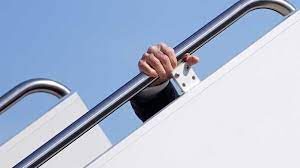

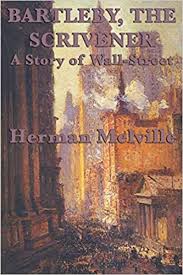
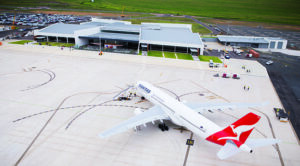
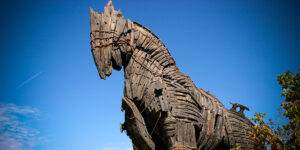


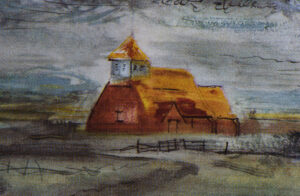
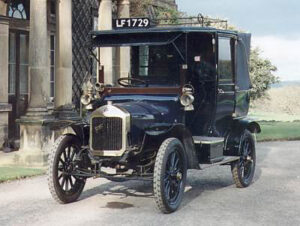
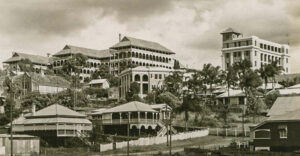
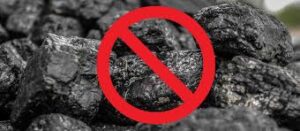
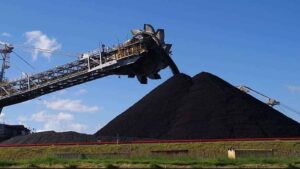
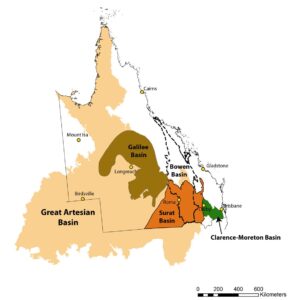



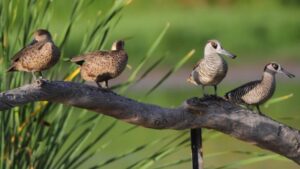
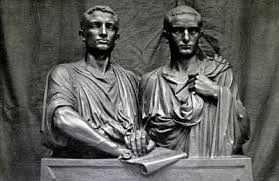
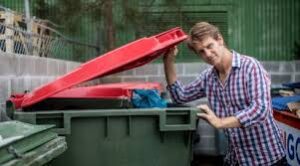
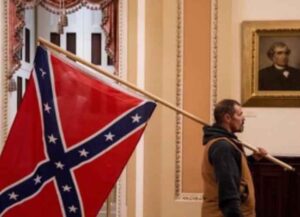 Comfortably intermingled with Christian rhetoric and these Christian icons were explicit symbols of white supremacy. Outside the Capitol, Trump supporters erected a large wooden gallows with a bright orange noose ominously dangling from the center. These Trump supporters managed to do something the Confederate army was never able to accomplish — fly the Confederate battle flag inside the U.S. Capitol. One widely shared image showed a rioter with the Confederate flag strolling past a portrait of William H. Seward, an anti-slavery advocate and Abraham Lincoln’s secretary of state, who was seriously wounded as part of the broad assassination plot in 1865 that killed Lincoln.
Comfortably intermingled with Christian rhetoric and these Christian icons were explicit symbols of white supremacy. Outside the Capitol, Trump supporters erected a large wooden gallows with a bright orange noose ominously dangling from the center. These Trump supporters managed to do something the Confederate army was never able to accomplish — fly the Confederate battle flag inside the U.S. Capitol. One widely shared image showed a rioter with the Confederate flag strolling past a portrait of William H. Seward, an anti-slavery advocate and Abraham Lincoln’s secretary of state, who was seriously wounded as part of the broad assassination plot in 1865 that killed Lincoln.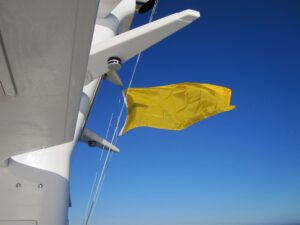
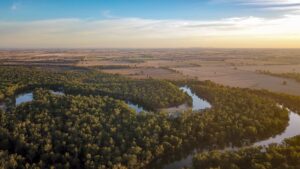
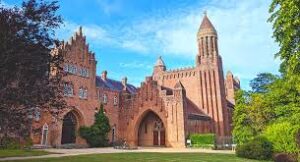
 Winter means virtually no tourists. We thus were able to move about and find that the next person was likely to be a Caulkhead, as the locals call themselves. When tourists arrive then the pace picks up and time to chat to find out why and how the island ticks diminishes. The ship’s chandler in Yarmouth – Harwoods – established in 1893 is a great place in which to ferret. We ended up with two models of working fishing boats, a couple of pennants and batteries. We resisted purchasing the brass clock and brass barometer, and one of the boats anyway turned out to be made in China. But who cares – the feeling of being in a seaside community, rather than being a working fishing village was strong.
Winter means virtually no tourists. We thus were able to move about and find that the next person was likely to be a Caulkhead, as the locals call themselves. When tourists arrive then the pace picks up and time to chat to find out why and how the island ticks diminishes. The ship’s chandler in Yarmouth – Harwoods – established in 1893 is a great place in which to ferret. We ended up with two models of working fishing boats, a couple of pennants and batteries. We resisted purchasing the brass clock and brass barometer, and one of the boats anyway turned out to be made in China. But who cares – the feeling of being in a seaside community, rather than being a working fishing village was strong.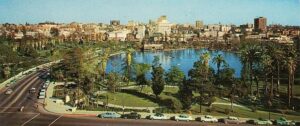
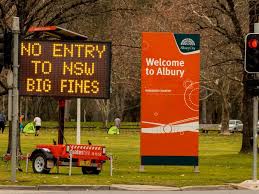
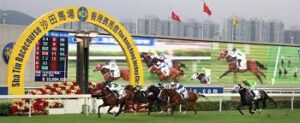
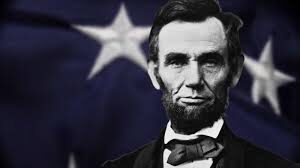
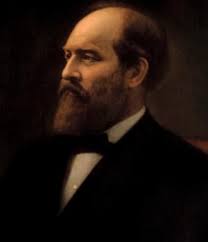
 I am going to name one toilet. The one at the Pheasant’s Nest Service Station which is one of last on the Hume Highway before Sydney, and therefore has a strategic importance if you do not want to be caught short on the freeway, caught in an unexpected gridlock.
I am going to name one toilet. The one at the Pheasant’s Nest Service Station which is one of last on the Hume Highway before Sydney, and therefore has a strategic importance if you do not want to be caught short on the freeway, caught in an unexpected gridlock.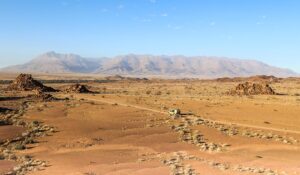


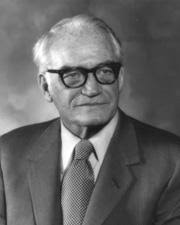

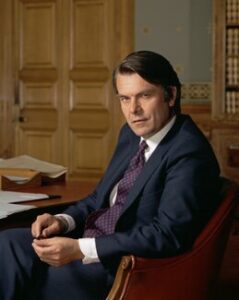
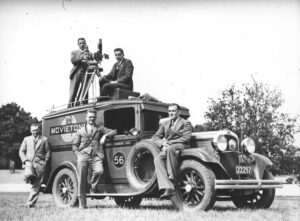 In addition, I persuaded the guys at Movietone, who had their archives in Balmain at the time, to put together a traditional newsreel, together with the highlights of 50 years. So it was a jampacked evening. Anne Summers was a great help in getting the program together, particularly persuading Nuggets Coombs to reminisce on the 30s and Patrick Cook to round up the speakers’ list.
In addition, I persuaded the guys at Movietone, who had their archives in Balmain at the time, to put together a traditional newsreel, together with the highlights of 50 years. So it was a jampacked evening. Anne Summers was a great help in getting the program together, particularly persuading Nuggets Coombs to reminisce on the 30s and Patrick Cook to round up the speakers’ list.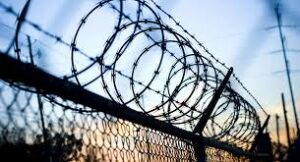

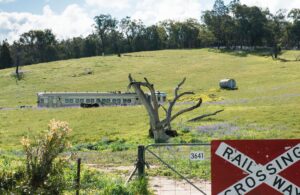
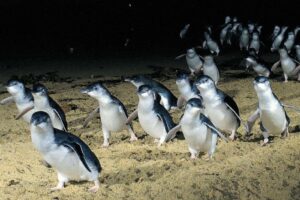
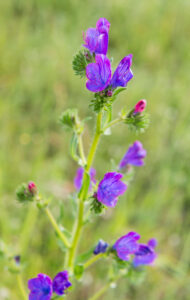
 Fillet of a fenny snake;
In the cauldron boil and bake;
Eye of newt and toe of frog,
Wool of bat and tongue of dog,
Adder's fork and blind-worm’s sting,
Lizard's leg and howlet's wing,
For a charm of powerful trouble,
Like a hell-broth boil and bubble.
Fillet of a fenny snake;
In the cauldron boil and bake;
Eye of newt and toe of frog,
Wool of bat and tongue of dog,
Adder's fork and blind-worm’s sting,
Lizard's leg and howlet's wing,
For a charm of powerful trouble,
Like a hell-broth boil and bubble.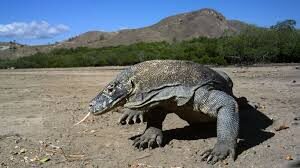 Zigzagging all across the landscape, he knows that the media are fascinated by his serpentine movements. The media is the helpless rodent in front of the snake, mesmerised by these movements. Perhaps more the Komodo dragon rather than snake, given that saliva is the medium for contagion, and that saliva is an ooze coating his White Burrow. So beware the Kiss of the Komodo, Ivanka.
Zigzagging all across the landscape, he knows that the media are fascinated by his serpentine movements. The media is the helpless rodent in front of the snake, mesmerised by these movements. Perhaps more the Komodo dragon rather than snake, given that saliva is the medium for contagion, and that saliva is an ooze coating his White Burrow. So beware the Kiss of the Komodo, Ivanka.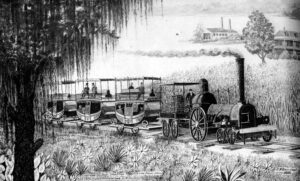

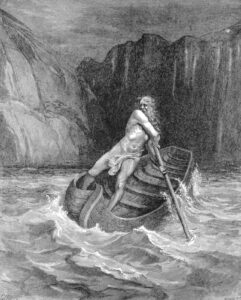
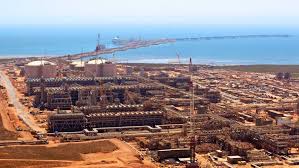
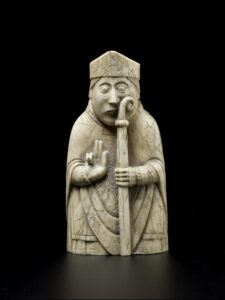

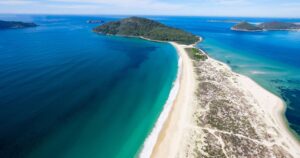

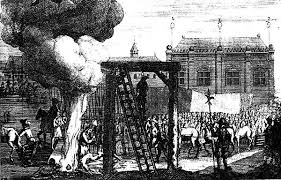
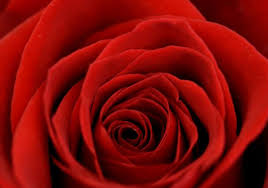 However, the spectre of Parkinsonism is real, especially if theoretically there was a long life ahead of you before the Virus came. I wonder whether it will be associated with a loss of smell, one of the symptoms of the Virus infection, because that may suggest an entry point into the brain along the olfactory cranial nerve, which is not only the shortest cranial nerve but also originates in the brain itself (rather than the brain stem, unlike all the other cranial nerves, except the optic nerve).
However, the spectre of Parkinsonism is real, especially if theoretically there was a long life ahead of you before the Virus came. I wonder whether it will be associated with a loss of smell, one of the symptoms of the Virus infection, because that may suggest an entry point into the brain along the olfactory cranial nerve, which is not only the shortest cranial nerve but also originates in the brain itself (rather than the brain stem, unlike all the other cranial nerves, except the optic nerve).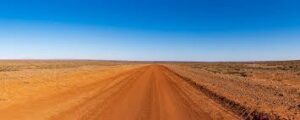
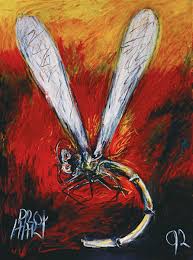
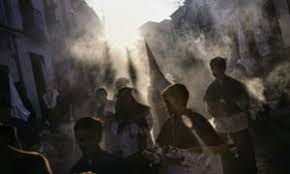
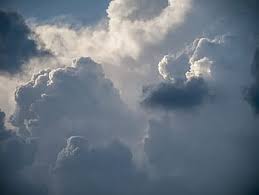
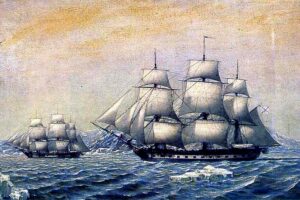
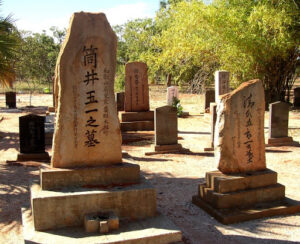
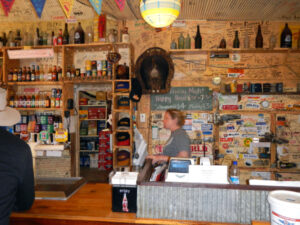
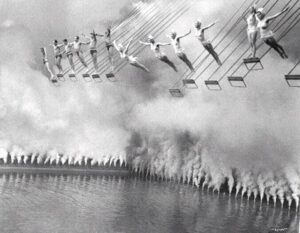
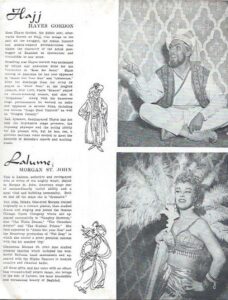 Hayes Gordon, the “Kismet” lead, was of that genre of baritones who always appear larger than life. Even though he had been proscribed and hence virtually exiled from his home USA by McCarthy and the House Unamerican Activities Committee (HUAC) he never lost his genial front and the twinkle in his eye – great memories of him. He would have been 100 this year.
Hayes Gordon, the “Kismet” lead, was of that genre of baritones who always appear larger than life. Even though he had been proscribed and hence virtually exiled from his home USA by McCarthy and the House Unamerican Activities Committee (HUAC) he never lost his genial front and the twinkle in his eye – great memories of him. He would have been 100 this year.
